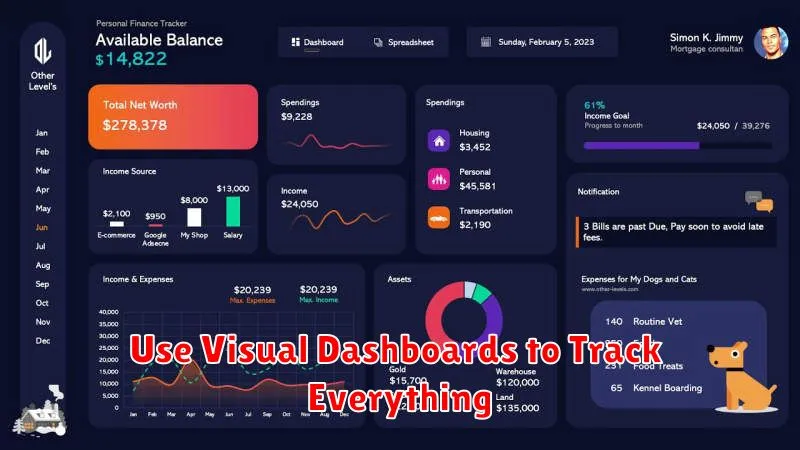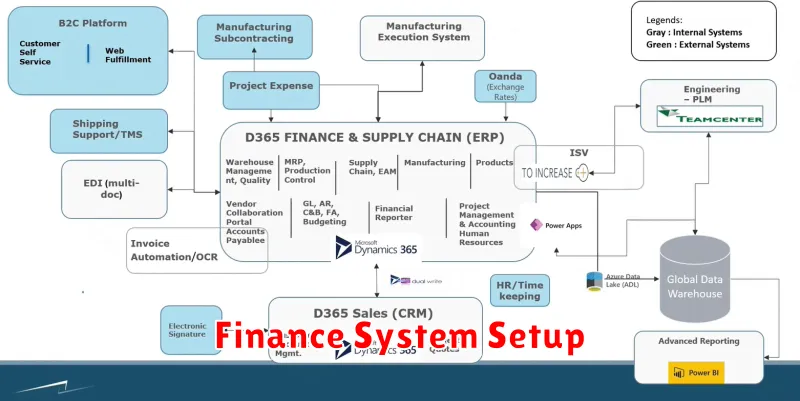Are you ready to take control of your financial future? This comprehensive guide, How to Build a Personal Finance System That Works for You, provides a step-by-step approach to creating a personalized budget, mastering debt management, and achieving your financial goals. Learn effective strategies for saving money, investing wisely, and building a solid financial foundation that empowers you to achieve financial freedom and secure your financial future.
Understand Your Financial Goals and Lifestyle
Building a successful personal finance system starts with a clear understanding of your financial goals and lifestyle. What are your short-term and long-term aspirations? Do you dream of owning a home, retiring early, or funding your children’s education? Defining these goals provides the necessary direction for your financial planning.
Equally important is understanding your current lifestyle and spending habits. Track your income and expenses to identify areas where you can save and allocate funds towards your goals. Consider your essential expenses (housing, food, transportation) versus your discretionary spending (entertainment, dining out). This honest assessment provides a realistic picture of your financial situation and helps in making informed decisions.
The alignment between your goals and your lifestyle is crucial. Unrealistic goals, unattainable given your current lifestyle and income, can lead to frustration and derail your progress. Adjusting your goals or modifying your lifestyle to better support your objectives is key to creating a sustainable and effective personal finance system.
Self-reflection is key to this process. Consider your values and priorities – how do they influence your financial decisions? This deeper understanding empowers you to make conscious choices that align with your overall life goals, fostering a more fulfilling and financially secure future.
Pick Tools That Match Your Personality
Building a successful personal finance system requires choosing the right tools. Effectiveness hinges not only on functionality but also on compatibility with your personality and preferences.
Organized individuals may thrive with detailed spreadsheet software or budgeting apps offering extensive categorization and reporting features. They appreciate the control and visibility these tools provide.
Conversely, those who prefer a simpler approach might find success with minimalist budgeting apps or even a basic notebook. The key is ease of use and maintaining consistent engagement, not complexity.
Tech-savvy users might gravitate towards sophisticated financial management platforms with automated features like bill payment reminders and investment tracking. Individuals less comfortable with technology may prefer manual methods or user-friendly apps with minimal learning curves.
Ultimately, the best personal finance tools are those you’ll actually use consistently. Experiment with different options to find the perfect fit for your personality and workflow. Consider free trials before committing to paid subscriptions.
Create Separate Systems for Earning, Spending, and Saving
A robust personal finance system necessitates a clear separation of income, expenses, and savings. This prevents commingling of funds and provides a transparent overview of your financial health.
Earning involves actively managing income streams. This includes tracking your salary, freelance income, or investment returns in a dedicated account or spreadsheet. Regularly reviewing this data allows you to identify areas for income growth.
Spending requires a structured approach to budgeting and tracking expenses. Utilize budgeting apps or spreadsheets to categorize and monitor your spending habits. Identifying and reducing unnecessary spending is crucial to maximizing savings.
Saving should be automated whenever possible. Set up automatic transfers to dedicated savings accounts or investment vehicles, ensuring consistent contributions. Prioritize emergency funds and long-term goals when allocating savings.
By establishing distinct systems for each aspect—earning, spending, and saving—you gain a clearer understanding of your financial situation and enhance your ability to achieve your financial objectives. This separation allows for focused management and informed decision-making.
Use Visual Dashboards to Track Everything

A visual dashboard is crucial for a successful personal finance system. It provides a centralized, at-a-glance view of your financial health. Instead of sifting through spreadsheets or numerous accounts, a dashboard consolidates key metrics.
Consider including key performance indicators (KPIs) such as your net worth, savings rate, debt levels, and monthly cash flow. Represent this data visually using charts and graphs (bar charts for comparing categories, line graphs for tracking progress over time, etc.).
The visual nature of a dashboard facilitates quick understanding and identification of trends. You can easily spot areas needing attention, such as unexpectedly high spending or slow savings growth. This immediate feedback empowers proactive financial management.
Many personal finance software programs and budgeting apps offer dashboard functionality, or you can create your own using spreadsheet software like Excel or Google Sheets. The key is to tailor it to your specific needs and preferences for optimal effectiveness.
Regularly reviewing your dashboard helps maintain financial awareness and ensures your personal finance system remains aligned with your goals. The visual representation makes the process less daunting and more engaging.
Keep It Simple to Avoid Burnout
Building a personal finance system shouldn’t feel like a second job. Overly complex systems often lead to burnout and abandonment. The key is simplicity.
Start with the basics: tracking your income and expenses. A simple spreadsheet or budgeting app can suffice. Don’t get bogged down in intricate categories or advanced financial modeling initially.
Focus on a few key areas: managing debt, saving for emergencies, and planning for the future. Tackle these one at a time, rather than trying to overhaul everything at once. Prioritize what matters most to you.
Regularly review your system (monthly is a good starting point), but don’t obsess over minute details. The goal is to gain a clear understanding of your financial situation, not to become a financial analyst. A simple, manageable system will promote consistency and long-term success, preventing burnout and ensuring your financial well-being.
Review and Clean Up Monthly

A crucial element of any successful personal finance system is a monthly review and cleanup. This involves more than just checking your account balances; it’s about actively managing your finances to ensure they align with your goals.
Begin by reconciling your bank and credit card statements. Compare your records with your bank’s and credit card company’s statements to identify any discrepancies. This step helps prevent errors and detects potential fraud early on.
Next, review your budget. Analyze your spending habits against your planned budget. Identify areas where you overspent or underspent and adjust your budget accordingly for the following month. This iterative process ensures your budget remains a dynamic tool, adapting to your changing needs and circumstances.
Finally, take time to clean up your financial records. Organize receipts, pay stubs, and other financial documents. Consider using a filing system, either physical or digital, to ensure you can quickly access necessary information. This will significantly simplify your tax preparation and future financial planning.
This monthly review and cleanup process, while seemingly simple, is fundamental to maintaining a healthy and effective personal finance system. By consistently dedicating time to this task, you’ll gain valuable insights into your spending habits, improve your financial discipline, and pave the way for achieving your long-term financial goals.
Back Up Financial Data Regularly
Regularly backing up your financial data is crucial for protecting yourself against data loss. This includes bank statements, investment records, tax documents, and any other relevant financial information.
Consider using a combination of methods for optimal data security. A local backup (e.g., external hard drive) offers quick access, while a cloud-based backup (e.g., online storage service) provides redundancy and protection against physical damage or theft.
Establish a consistent backup schedule. Aim for daily or weekly backups depending on the frequency of your financial transactions and the importance of your data. Ensure you test your backups periodically to verify their integrity and recoverability.
Encryption is vital to protect your sensitive financial data from unauthorized access. Use strong passwords and consider employing two-factor authentication for enhanced security.
By implementing a robust backup strategy, you can significantly reduce the risk of financial hardship resulting from data loss and maintain control over your personal finances.
Update Your System With Life Changes
A personal finance system, while initially effective, requires regular updates to reflect your evolving circumstances. Life changes necessitate adjustments to your budgeting, saving, and investing strategies.
Major life events such as marriage, childbirth, job changes (including promotions, salary decreases, or unemployment), and significant purchases (homes, vehicles) significantly impact your financial situation. These events demand a reassessment of your income, expenses, and financial goals.
Regular review of your budget is crucial. Adjust your spending categories to align with your new reality. For example, a new baby will increase expenses related to childcare and healthcare, while a promotion might allow for increased savings and investment contributions.
Re-evaluate your financial goals. Life changes may alter your long-term aspirations. What seemed important before might need revision. Updating your goals ensures your financial system remains focused and effective in supporting your present needs and future ambitions.
Don’t procrastinate. Address changes promptly to avoid falling behind on your financial targets. The sooner you integrate these updates, the smoother the transition will be and the better equipped you’ll be to manage your finances effectively.
